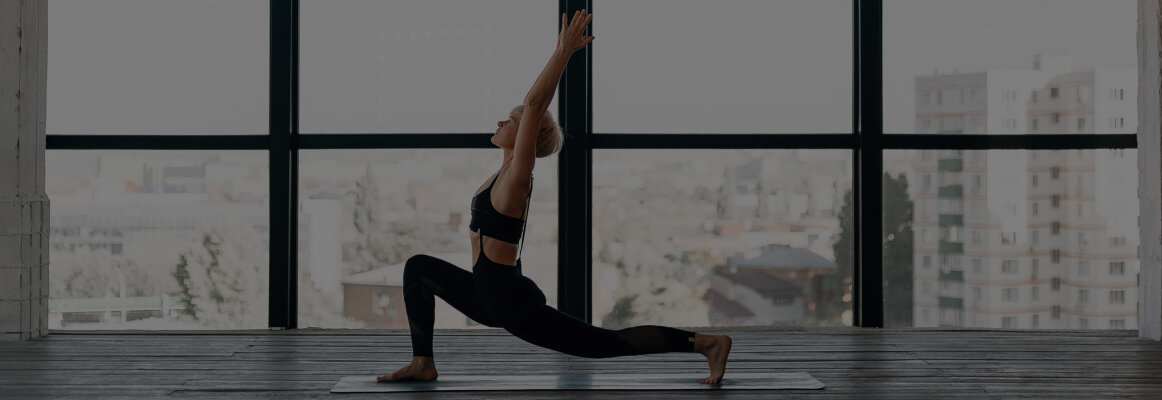Guide to Yoga, Pilates & Gymnastics Mats
If you're looking for the perfect mat for your yoga, Pilates or gymnastics exercises, you've come to the right place. In this guide, you'll learn everything you need to know about the different types of mats to make the best choice for your needs. The material of the yoga mat is one of the most important factors you should consider. The material not only affects the comfort and durability of the mat, but also its environmental friendliness and slip resistance. And we also take a look at the most popular yoga mat brands that you can order from us.
Yoga Mat, Pilates Mat or Gymnastics Mat
Whether you practise yoga, Pilates, fitness or gymnastics, the right mat is crucial for your comfort and safety. A good mat will provide you with the cushioning, slip resistance and support you need to avoid injury and perform your exercises effectively. The difference between a yoga mat, a Pilates mat and a gym mat lies in their functionality and composition.
Yoga mat: This mat is non-slip and provides good cushioning to ensure stability during yoga poses. It is usually 2 to 6 mm thick and has an internal fabric so that the yoga mat does not warp.
Pilates mat: Pilates mats are thicker, often between 6 and 15mm, and offer additional comfort for exercises performed on the back or lying down. They are often made of foam and have a smooth surface that facilitates movement.
Gymnastics mat: Gymnastics mats are versatile and usually 1 to 2cm thick. They provide good cushioning for general fitness exercises, stretching and bodyweight exercises, but are not as slip-resistant as yoga mats.
Why is the material of the yoga mat so important?
The material of your yoga mat determines how it feels, how non-slip it is, how well it sticks to the floor and how long it lasts. It also plays a role in how environmentally friendly the mat is and whether it is suitable for allergy sufferers. Here are the most common materials used to make yoga mats:
Natural rubber
- Advantages: Natural rubber is an environmentally friendly material that is biodegradable. It offers excellent slip resistance and cushioning.
- Disadvantages: These yoga mats are heavier and have an odour due to the material, which is annoying for some people.
- Care: Clean natural rubber mats with a damp cloth and yoga mat cleaner and avoid direct sunlight.
PVC (polyvinyl chloride)
- Advantages: PVC is one of the most commonly used materials for yoga mats. It is durable, offers good slip resistance and is often cheaper than other materials.
- Disadvantages: PVC is not biodegradable and is not the best choice for environmentally conscious yogis.
- Maintenance: PVC mats are easy to clean with soap and water.
TPE (thermoplastic elastomers)
- Advantages: TPE is a more environmentally friendly material than PVC and offers a good balance between cushioning and slip resistance. It is lightweight and hypoallergenic.
- Disadvantages: TPE mats are often less durable than PVC or natural rubber mats.
- Maintenance: These yoga mats can be cleaned with a mild detergent and water.
How do you choose the right material?
When choosing the right material for your yoga mat, you should consider your personal needs and preferences. If you value environmental friendliness, natural rubber, cork or TPE are good options. TPE and cotton are often the better choice for allergy sufferers. If you are looking for a durable, odourless and inexpensive yoga mat, you should consider PVC.
Other factors to consider when choosing a yoga mat
Thickness: Depending on the type of exercise you are doing, you should choose the thickness of the mat. Yoga mats are usually 2 to 6mm thick, while Pilates and gymnastics mats can be up to 15mm thick. Travelling yoga mats are often only 1 to 2mm thick, lightweight and foldable to fit in a suitcase.
Slip resistance: We have found that the slip resistance of yoga mats is assessed very individually. It often depends on how intensively you practise and how much you sweat. For most people, a natural rubber yoga mat offers the best grip, even during sweaty exercises.
Portability: If you transport your yoga mat often, pay attention to the weight and the ability to roll it up easily.
Our yoga mat brands
Manduka: Known for their durable and eco-friendly mats, Manduka offers a wide range of yoga mats that are suitable for both beginners and advanced practitioners.
Jade Yoga: This brand from the USA attaches great importance to sustainability and produces yoga mats made of natural rubber that offer excellent slip resistance and comfort.
helloSun: The helloSun yoga mats are made in Spain from natural rubber and are Oeko-Tex certified. They are characterised by excellent slip resistance and durability and are produced in various thicknesses.
Airex: Airex gymnastics mats are a genuine Swiss quality product and have proven themselves in many physiotherapy and gymnastics studios. It is the ease of care and durability of these mats that is highly appreciated.
Care and cleaning
It is important to clean your yoga mat regularly to prolong its lifespan and maintain its slip resistance. Use a mild detergent or a special yoga mat spray and allow the mat to dry completely before rolling it up. Some mats can also be machine washed. You can find all the important information on cleaning and caring for the respective mat in the product description of the yoga mat.
Conclusion
There is no perfect yoga mat for everyone. It is important to pay attention to your preferences, needs and requirements. Choosing the right mat can make a big difference to your practice. Whether you're looking for a yoga mat, pilates mat or gymnastics mat, pay attention to material, thickness and slip resistance to find the best option for your needs. With the high-quality brands we offer in the shop, you are sure to find the ideal mat to support you in your exercises.❤️
54 Items
54 Items
